We’re all responsible for what happens in the virtual space we share—and that goes double for managers. Our employees look to us for cues on what to say, how to say it, and whom to invite into the conversation. In short, managers don’t just guide our team’s work—we guide its culture.
And for better or worse, culture is as much a product of what we let happen as what we make happen. Whether our team meetings resemble a thriving ecosystem or a battle of alphas, we send a powerful message about who is heard and valued. As Gregg Kendrick, Director of Tranforming Leaders and Culture service, explains: “If conflict or negativity occur and they’re not addressed, they, too, are a part of your culture.”
Quick caveat: No team is perfect. But when inevitable moments of discomfort and dissent happen, we need to guide our employees through them.
That might sound personal—and sometimes it is. But leading with a service mindset is absolutely part of every manager’s job description. That means learning how employees want to relate, communicate, and work—then honoring their preferences and removing any barriers they face in doing their best work.
Create (Virtual) Space for Sharing
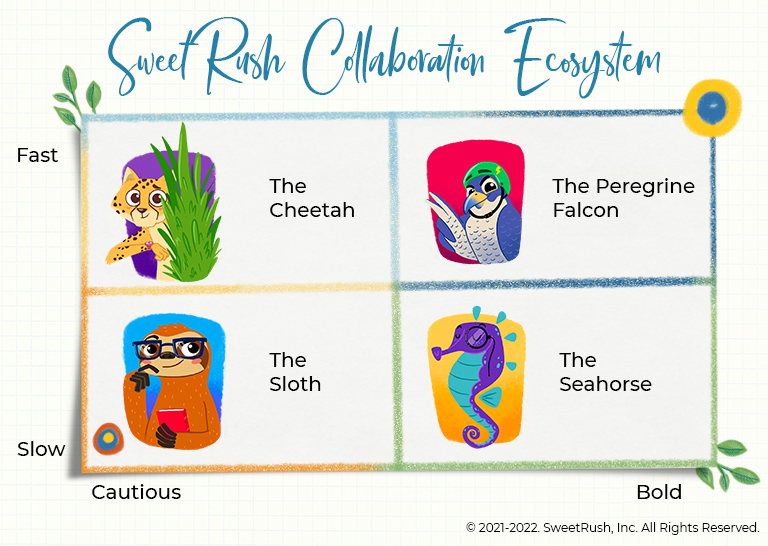
Making space for everyone to share is a vital part of leading with a service mindset. Sharing won’t look the same for everyone, and it won’t always happen synchronously—but it’s very much worth doing.
(Note: Our team has been fully remote for over a decade—since 2009!—so when we talk about collaboration, we picture a virtual space. Whether your team collaborates in the ether like us, in hybrid settings, or face-to-face, these tips still apply!)
You’re allowed to have fun with it, too! Our collaboration ecosystem can help your team members identify their participation style, using a common language to describe how quickly and boldly they share. This exercise is a great reminder that virtual collaboration can literally be a different animal for everyone.
Let’s start with those one or two team peregrine falcons on your team. They love to speak up in meetings. They fill the awkward silences and never fail to unmute themselves. They fly ahead of the rest of the flock, and they have a lot of ideas.
Peregrine falcons are great! But if they’re the only ones you hear from, you’re only getting the peregrine falcon perspective—and there are so many others worth hearing.
Some team members may not say much even when you call on them. Some get self-conscious and lose their train of thought. Some need double or triple the time to brainstorm ideas—and might sign on to a peregrine falcon’s idea when put on the spot. This dynamic makes it difficult to workshop ideas—and reduces the number of ideas on the table.
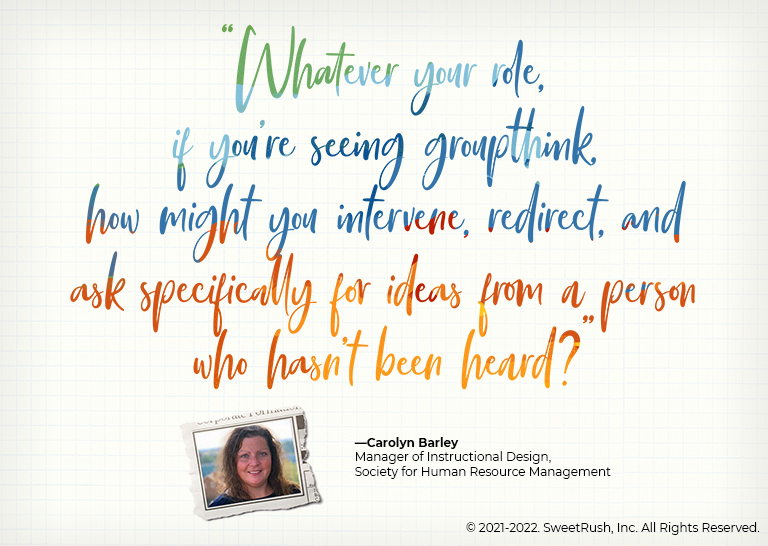
All of your people have ideas—we promise. Some simply need more time to think or a different way to share. That may be because their brains or bodies work differently or because their personalities show up differently in a group.
Your team members’ virtual collaboration style can even change in different contexts. In an all-hands meeting, your peregrine falcons might turn into slower or more cautious species—like cheetahs, sloths, and seahorses. And some of your sloths may speed up for a topic they’re passionate about.
People are complicated. But building a virtual collaboration ecosystem where every team member can thrive doesn’t have to be. A few easy-to-implement adaptations can shake up old habits and lift new voices.
Ready to give it a try? Pick a card—any card.
Virtual Collaboration Tip #1: Offer notice.
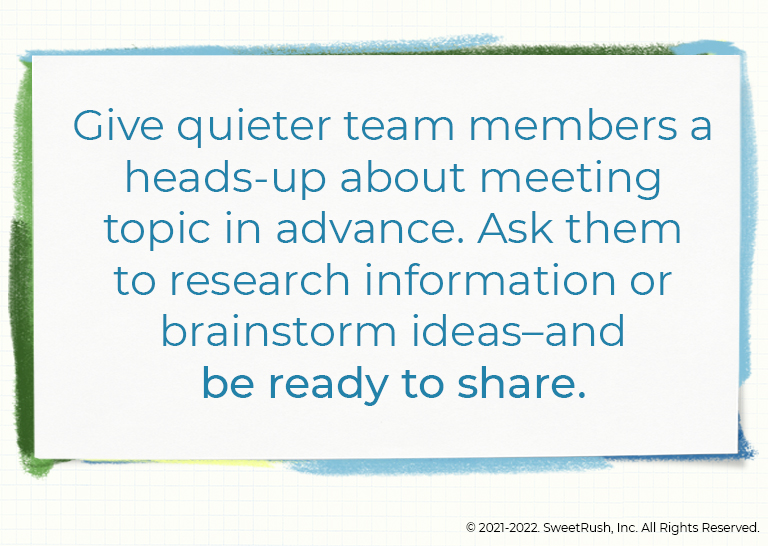
Benefits:
- Offers a structured way to contribute and be heard
- Respects thinkers who process at different paces and in different settings
- Offers less-heard team members the opportunity to be experts
Virtual Collaboration Tip #2: Give everyone a job.
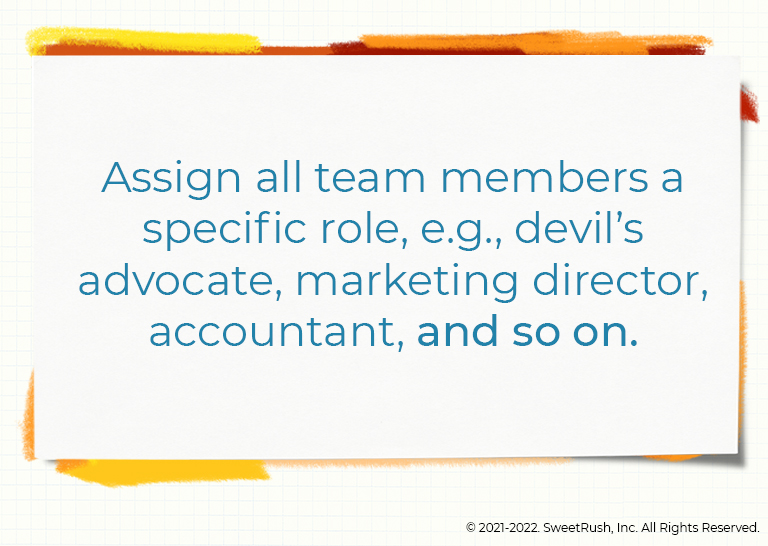
Benefits:
- Offers a structured way to contribute and be heard
- Provides an area of focus for each team member
- Builds dissent into the brainstorming process
Virtual Collaboration Tip #3: Push forward, pull back.
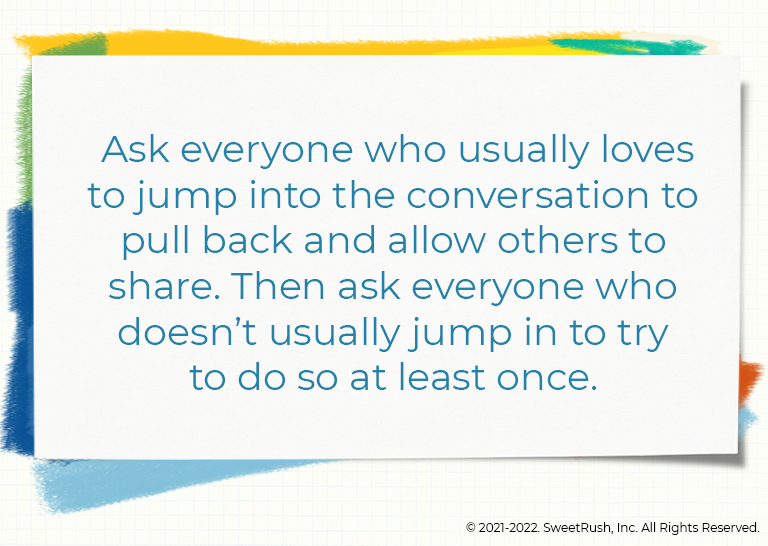
Benefits:
- Encourages self-awareness on the part of each team member
- Allows thinkers who work more slowly to choose when to share
- Models curiosity and interest in all team members’ opinions
Virtual Collaboration Tip #4: Follow up.
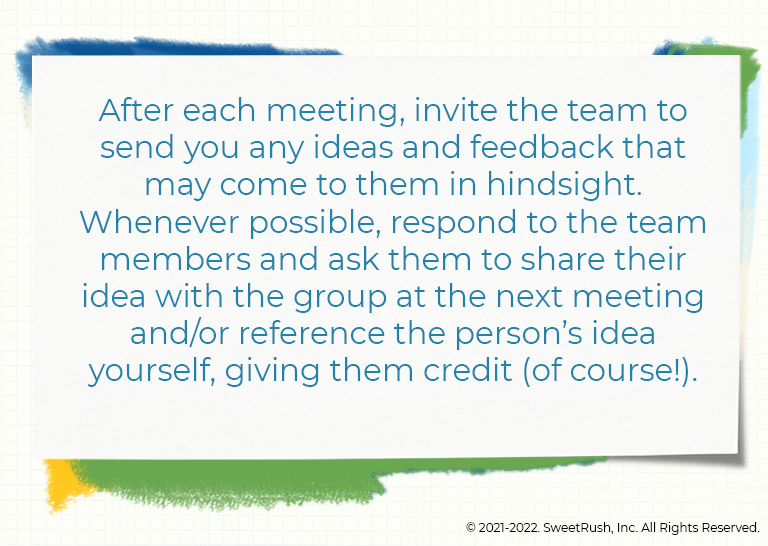
Benefits:
- Allows thinkers who work more slowly to choose when to share
- Models curiosity and interest in all team members’ opinions
- Offers less-heard team members the opportunity to be experts
Better Virtual Collaboration → Better Business
We’ve said it before: Your team members want to do well, and you can help them by removing barriers to their success.
We’re not just talking about corporate red tape or glitchy meeting software, either. Norms of communication and behavior that make it hard for team members to hear each other are some of the most frustrating barriers of all.
If you’re not seeing a mix of species in your virtual collaboration ecosystem, keep switching it up! Adapting your meeting styles will help your more cautious sharers find their niches—and teach the bold to stop and listen.
Inviting everyone into the conversation isn’t just the kind thing to do; it’s also the best move for your business. Teams with all kinds of minds, perspectives, and backgrounds are stronger, smarter, and more innovative, though achieving a highly effective state takes time and practice.
Curious about more virtual collaboration and management practices that help your team achieve a highly effective state? Check out our eBook, It’s All About Your People!: Embracing Human-Centered Business, Workplace Culture, and Learning Design. You’ll find plenty of lessons about how to re-create teamwork as a source of resilience and fulfillment—all tested over our two decades as a human-centered organization (and decade-plus as a fully remote team!).




